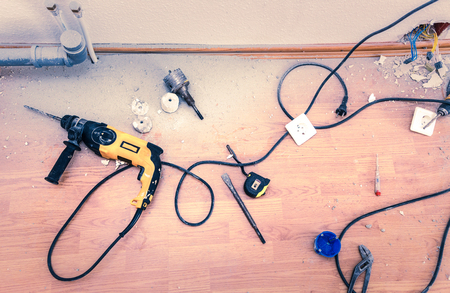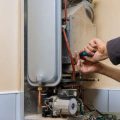Overview of Electrical Safety Regulations in the UK
Electrical safety in residential properties across the UK is governed by a comprehensive framework of legislation and standards, reflecting the nation’s commitment to safeguarding both homeowners and tenants. Central to these regulations is the Electrical Safety Standards in the Private Rented Sector (England) Regulations 2020, which require all rented homes to undergo regular electrical inspections by qualified professionals at least every five years. In addition, updates to the British Standard BS 7671—commonly known as the IET Wiring Regulations—set out technical requirements for electrical installations, ensuring that systems are both robust and up-to-date with modern safety expectations. Recent years have seen a tightening of these rules, driven by increased awareness of fire hazards and a push towards higher living standards. As a result, landlords must now provide evidence of compliance to local authorities and tenants, while homeowners are strongly encouraged to follow best practice guidelines even when not legally obliged. This evolving legislative landscape underscores the importance of proactive electrical maintenance and highlights the UK government’s ongoing efforts to raise safety benchmarks within its housing sector.
2. Key Responsibilities for Homeowners and Landlords
Understanding the legal duties and obligations regarding electrical safety is paramount for both homeowners and landlords across the UK. The government has implemented strict standards to ensure that properties are safe for occupation, and failing to comply can result in significant penalties, not to mention risks to life and property. Below, we break down the key responsibilities, with a focus on compliance and regular maintenance.
Legal Duties: A Comparative Overview
| Responsibility | Homeowners | Landlords |
|---|---|---|
| Electrical Installation Condition Report (EICR) | Recommended every 10 years or when selling/buying a property | Mandatory every 5 years or at change of tenancy |
| Remedial Actions after Inspection | Advisable if faults are found | Required within 28 days (or sooner if specified) |
| Provision of Safety Certificates | Not mandatory, but beneficial for resale value | Must provide new tenants with a copy before move-in; existing tenants within 28 days of inspection |
| Regular Maintenance and Upgrades | Encouraged to protect investment and occupant safety | Obligatory to maintain property in a safe condition throughout tenancy |
| PAT Testing (Portable Appliances) | Voluntary, enhances peace of mind | Expected for supplied appliances, especially in HMOs (Houses in Multiple Occupation) |
The Importance of Compliance and Maintenance
For landlords, compliance isn’t just about avoiding fines—its a fundamental part of providing quality accommodation and protecting your investments long-term value. For homeowners, proactive electrical maintenance can prevent costly emergencies and increase your propertys market appeal. Both groups should work with qualified electricians registered with schemes such as NICEIC or ELECSA to ensure all works meet British Standards (BS 7671).
Regular Inspections: A Proactive Approach
Scheduling regular inspections and addressing any faults without delay serves multiple purposes: it ensures legal compliance, maintains safety for occupants, and preserves the structural integrity of your home or portfolio. Keep thorough records of all inspections, repairs, and upgrades—these documents may be required during property sales or in the event of insurance claims.
In summary, understanding your responsibilities as either a homeowner or landlord is crucial in todays regulated property market. Staying ahead of maintenance requirements not only mitigates risk but also supports stable property values—a wise move for any UK property investor.

3. Tenant Rights and How to Raise Concerns
When it comes to electrical safety in the UK, tenants are protected by a robust legal framework designed to ensure that rental properties meet strict safety standards. Understanding your rights as a tenant is crucial for both your personal safety and peace of mind. Landlords are legally required to ensure that all electrical installations in their properties are safe at the start of a tenancy and maintained in a safe condition throughout. This includes having an Electrical Installation Condition Report (EICR) carried out at least every five years by a qualified electrician, with a copy provided to new tenants before they move in and to existing tenants within 28 days of inspection.
If you suspect any electrical hazards—such as faulty wiring, exposed sockets, or malfunctioning appliances—it is important to act promptly. Start by documenting the issue with photos and clear descriptions. Notify your landlord or letting agent in writing, outlining the specific concerns and requesting urgent attention. In most cases, landlords are responsive, as non-compliance can result in hefty fines and legal repercussions.
If your landlord fails to address the issues within a reasonable timeframe, escalate the matter by contacting your local council’s Environmental Health department. Councils have the authority to inspect properties and enforce remedial action under the Housing Health and Safety Rating System (HHSRS). For additional support, tenants can seek advice from organisations such as Citizens Advice or Shelter UK, which offer guidance on how to pursue further action if necessary.
Ultimately, maintaining open communication with your landlord is key, but don’t hesitate to assert your rights if safety concerns are ignored. Being proactive not only protects your wellbeing but also contributes to a safer rental market across the UK.
4. Understanding Electrical Installation Condition Reports (EICR)
The Electrical Installation Condition Report (EICR) is a crucial document for anyone involved in the UK property market—be it homeowners, tenants, landlords, or buyers. EICRs are comprehensive assessments carried out by qualified electricians to determine the safety and integrity of a propertys electrical systems. Here’s what you need to know about their purpose, process, and relevance.
What Is an EICR?
An EICR is an official report that evaluates whether the electrical installations in a property are safe and compliant with current UK standards. It identifies any deterioration, defects, or potential risks that could compromise safety. For landlords, obtaining a valid EICR is now a legal requirement before renting out their property, and it must be renewed at least every five years or at change of tenancy.
Why Are EICRs Important?
Electrical faults are one of the leading causes of house fires in the UK. An up-to-date EICR not only ensures compliance with regulations but also provides peace of mind for both property owners and occupants. For buyers and tenants, requesting sight of an EICR helps verify that the home meets the required safety standards, potentially saving on costly repairs or hazardous surprises down the line.
The EICR Inspection Process
The inspection itself typically involves a thorough visual check combined with testing of fixed wiring, sockets, light fittings, fuse boards, and earthing arrangements. The electrician will look for wear and tear, damage, outdated components, or non-compliance with BS 7671 (the UK Wiring Regulations).
| Inspection Step | Description |
|---|---|
| Visual Assessment | Identifying visible signs of damage or ageing |
| Testing Circuits | Checking functionality and safety of all circuits |
| Earth Bonding Check | Ensuring adequate earthing to prevent electric shocks |
| Reporting & Grading Issues | Coding any problems as C1 (Danger), C2 (Potential Danger), or C3 (Improvement Recommended) |
Common Findings in EICRs
EICRs often highlight issues such as outdated fuse boxes, inadequate earthing, exposed wiring, overloaded circuits, or lack of RCD protection. These findings are categorised as follows:
| Code | Meaning | Action Required |
|---|---|---|
| C1 | Danger present – immediate risk to safety | Immediate remedial action needed |
| C2 | Potentially dangerous – urgent attention required | Rectify as soon as possible |
| C3 | Improvement recommended – not unsafe but should be upgraded | No immediate action required; plan for upgrades |
| FI | Further investigation required without delay | Arrange additional checks promptly |
The Bottom Line for Homeowners and Tenants
If you’re buying or renting in the UK property market, always ask for a recent EICR to ensure your new home is electrically sound. For landlords and property investors, maintaining regular EICRs isn’t just a legal obligation—it’s an investment in both compliance and long-term asset value.
5. Common Electrical Hazards in UK Homes
Electrical safety is a critical concern for both homeowners and tenants across the UK, given the age and diversity of British housing stock. Understanding typical electrical faults and hazards is essential for maintaining a safe living environment and adhering to current UK electrical standards.
Outdated Wiring Systems
Many older properties in the UK still feature outdated wiring, such as rubber or cloth-insulated cables. These materials deteriorate over time, increasing the risk of short circuits or fire. Regular inspection and timely rewiring are vital risk mitigation strategies, especially in homes that have not been updated for decades.
Overloaded Sockets and Extension Leads
It’s common in British households to rely heavily on multi-way adaptors and extension leads due to insufficient plug sockets. However, overloading these can cause overheating and even electrical fires. Homeowners and tenants should avoid daisy-chaining extension cords and ensure that appliances do not exceed recommended load capacities.
Poorly Maintained Consumer Units (Fuse Boxes)
An outdated or poorly maintained consumer unit poses significant risks. Modern consumer units fitted with Residual Current Devices (RCDs) greatly enhance protection against electric shocks and fire. Regular checks by a qualified electrician can ensure that your fuse box complies with current UK standards.
DIY Electrical Work
While it might be tempting to tackle minor electrical jobs personally, unqualified DIY work is a leading cause of electrical accidents in the UK. Always engage a registered electrician for installations or repairs, as required by British law and safety guidelines.
Tips for Reducing Risks
- Schedule an EICR (Electrical Installation Condition Report) at least every five years or when moving into a new property.
- Test RCDs quarterly to confirm they function correctly.
- Never ignore warning signs such as flickering lights, burning smells, or tripping circuits—these require immediate professional attention.
By recognising these common hazards and implementing proactive maintenance routines, UK homeowners and tenants can significantly reduce their exposure to electrical risks while ensuring compliance with national safety standards.
6. Market Trends and Future Compliance Considerations
Staying abreast of market trends and evolving regulations is crucial for both homeowners and property investors in the UK. Over recent years, there has been a marked tightening of electrical safety standards, especially following the introduction of the Electrical Safety Standards in the Private Rented Sector (England) Regulations 2020. This trend is expected to continue as the government seeks to further enhance tenant protection and reduce fire-related incidents.
Increasing Regulatory Scrutiny
The regulatory landscape is becoming progressively stringent, with local authorities conducting more frequent inspections and imposing heftier penalties for non-compliance. There is growing pressure on landlords to ensure that all rental properties meet up-to-date electrical safety standards, including mandatory five-yearly Electrical Installation Condition Reports (EICRs). Homeowners considering letting their properties should anticipate that periodic checks will likely become even more rigorous in the near future.
Emerging Technologies and Smart Homes
The rapid adoption of smart home technologies presents new opportunities—and challenges—in maintaining compliance. Innovations such as smart meters, connected lighting systems, and integrated security solutions may eventually become subject to specific electrical safety requirements. Investors should stay informed about how these technologies are regulated, as updating outdated wiring or fuse boxes could become necessary to accommodate modern devices safely.
Sustainability and Energy Efficiency
With sustainability high on the government agenda, future regulations may incentivise or require upgrades that improve both safety and energy efficiency. This could include stricter rules on the installation of renewable energy systems like solar panels or electric vehicle charging points, which must be safely integrated into existing electrical systems.
What Homeowners and Investors Should Do
To remain competitive in the UK property market, proactive compliance is key. Regularly scheduling professional inspections not only mitigates legal risk but also enhances property value and tenant satisfaction. Investors should budget for ongoing upgrades to electrical infrastructure as part of their long-term asset management strategy. Staying ahead of legislation by adopting best practices now can protect your investments from costly future remediation works and provide reassurance to prospective tenants or buyers that your property meets the highest safety standards.

